With over 200 million members in the U.S. alone, LinkedIn provides a goldmine of opportunities to connect, engage, and gain a competitive edge. But how can you gain the upper hand in this highly competitive landscape? Start with a comprehensive competitor analysis.
A LinkedIn competitor analysis goes beyond merely keeping an eye on your rivals. It provides a strategic advantage by helping you identify industry trends, understand competitor strategies, and discover untapped opportunities.
But, here’s the catch: LinkedIn’s public data isn’t readily accessible, making it challenging to conduct competitor analysis using third-party tools (including ours). But fear not! With a little sleuthing and the power of LinkedIn’s native analytics, you can still uncover valuable insights about your competition.
Ready to start analyzing your brand's performance on LinkedIn?
In this blog, we’ll dive into the world of LinkedIn competitor analysis and explore how you can harness the platform’s built-in analytics to stay one step ahead. But first, let’s establish why competitive analysis is so vital to business success.
The Value of Competitive Analysis
By analyzing your competitors’ activities and strategies, you can gain valuable insights to fuel your success on LinkedIn.
One of the primary advantages of monitoring and tracking your competitor’s performance is that it allows for competitive benchmarking, which is when you compare your brand’s performance against your rivals so that you’re accurately assessing your competitive position in the market.
Another benefit is the ability to identify industry trends. By monitoring your industry peers, you gain valuable insights into what works and what doesn’t in your niche. This understanding enables you to adapt your own approach and capitalize on emerging trends.
Even more, a thorough competitor analysis on LinkedIn helps you learn from your competitors’ strategies. By examining their Company Pages, content types, and engagement metrics, you can uncover their winning (or losing) tactics. This insight empowers you to refine your strategy as you learn from their successes and avoid their mistakes.
Not to mention, a successful competitor analysis can also uncover growth opportunities. By identifying gaps or areas where your competitors are underperforming, you can position yourself to fill those voids and attract their audience. It enables you to discover untapped markets, refine your messaging, and differentiate yourself from others.
With those advantages in mind, let’s get into how to effectively research and assess your competition on LinkedIn using the platform’s native analytics.
LinkedIn Competitor Analysis: 4 Key Areas To Focus On
When it comes to conducting competitor research on LinkedIn, there are four main areas to look at: their LinkedIn Company Page, their content strategy, their performance analytics, and sentiment surrounding their brand. Let’s dig into each one.
1. Examine Their LinkedIn Company Page
By thoroughly analyzing your competitor’s Page, you can gain a deeper understanding of their approach and identify areas where you can differentiate yourself.
Start by taking a close look at their About section. This section provides a snapshot of the company’s mission, values, and key offerings. Pay attention to how they present their brand, their mission statement, and the unique selling points they highlight.
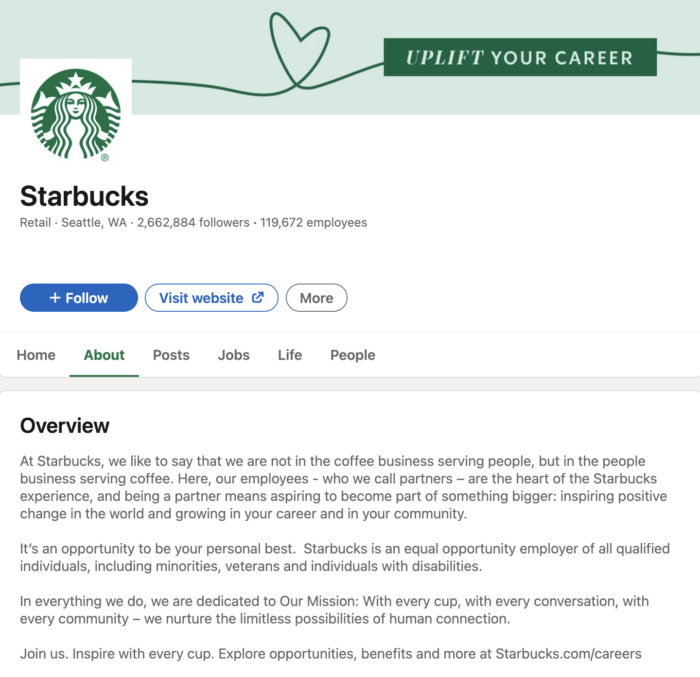
This information can help you evaluate how they position themselves in the market and identify any gaps you can capitalize on. By understanding how they position themselves, you can identify potential differentiators and areas where you can improve your own brand messaging.
Approach their Life section with the same mindset. Are they including information that you’ve missed on your own profile? Is there an opportunity to highlight an advantage or benefit that you have over your competitors?
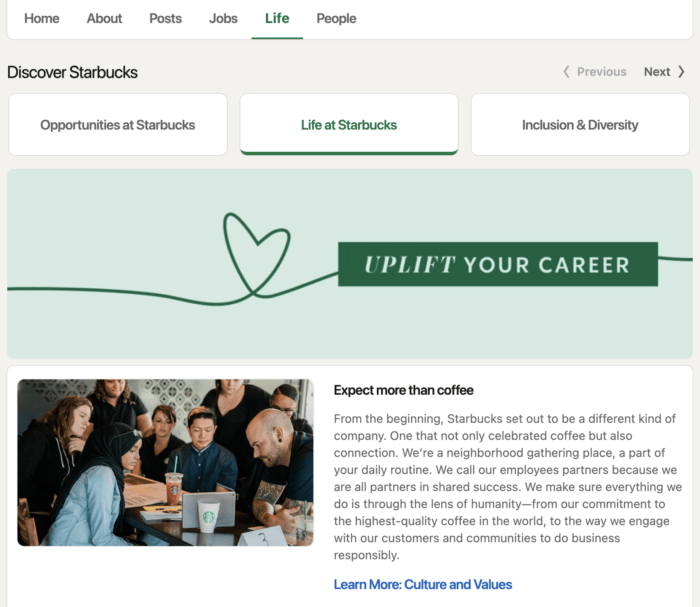
2. Analyze Their Content Strategy
Next, you’ll want to study your competitor’s posts in order to gain an understanding of their content strategy.
To begin, take note of how often your competitors are posting on LinkedIn. Is it daily, weekly, or less frequently? This will give you an idea of their posting frequency and the level of activity they maintain on the platform.
Then, delve into the types of posts they share. Are they primarily sharing industry news, thought leadership articles, or promotional content? Understanding their content mix can give you a sense of their focus and messaging priorities, as well as give you ideas for where you want to go with your own strategy.
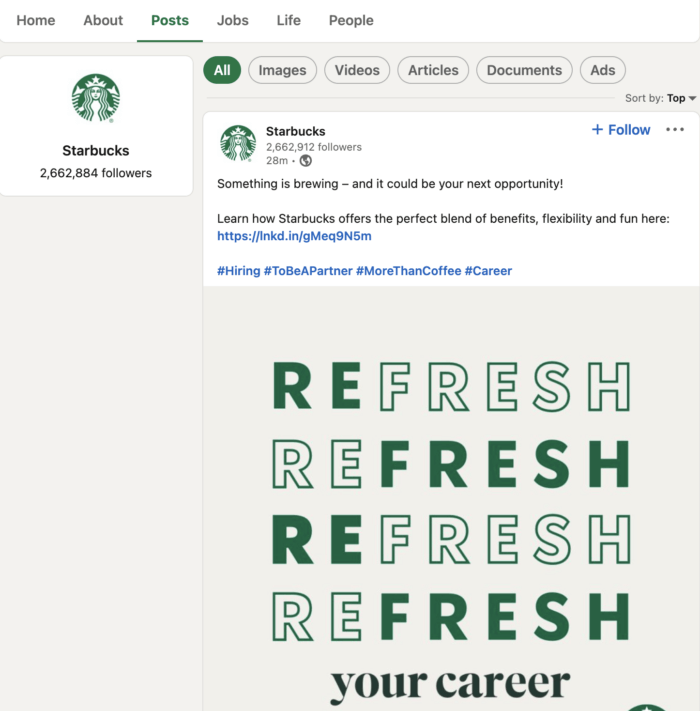
Pay special attention to the posts with notable engagements, including reactions, comments, and reposts. By studying top-performing content, as well as the reactions they get from other users, you can uncover the topics, formats, or strategies that strike a chord with their audience.
Remember, competitor research is not about imitating others but about learning from successful strategies and adapting them to suit your brand’s unique voice and goals. By assessing your competitors’ content strategy, you can gain valuable insights to inform and optimize your own LinkedIn presence.
Track Competitor Analytics
In addition to studying your competition’s Company Page and content, you also need to analyze the numbers that reveal how well their page and content are performing. Two types of competitor metrics are available on LinkedIn: follower metrics and organic content metrics.
The easiest way to retrieve data on these key metrics is through LinkedIn Page Analytics. To access your Competitor Analytics page, simply navigate to your LinkedIn Company Page in “Super admin view,” click on the drop-down Analytics tab, and select Competitors.
This page will show you how your Company Page stacks up to other companies of your choosing. You can add up to nine competitors to compare against, as well as adjust the time frame of the data you want to analyze. This allows you to benchmark how you’re doing against industry peers, helping you establish future goals and gauge your relative success over time.
LinkedIn reports four metrics on the Competitor Analytics page. The first two fall under follower metrics: total followers and new followers.
Note how many new followers each competitor, as well as your own company, gains over time. This metric reflects follower growth, which is crucial in understanding the relative popularity of your brand within your industry. Are you gaining followers faster than your competitors? Or are they outpacing you?
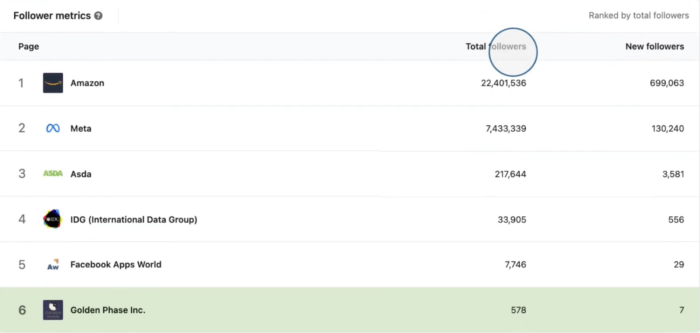
The other two metrics that LinkedIn reports on the Competitor Analytics page are total engagements and total posts.
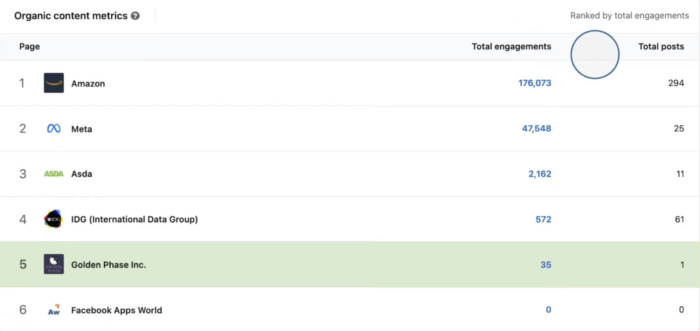
Examining total engagement helps gauge the relative popularity and resonance of your brand within the industry. Are your posts generating more reactions, comments, and shares than those of your competitors?
Conversely, analyzing total posts indicates the frequency and consistency of content creation. Are you maintaining an active presence and posting more frequently than your competitors, or are they outpacing you in terms of content output? Monitoring these metrics helps you assess your brand’s position and make data-driven decisions to enhance your LinkedIn presence.
Monitor Mentions and Interactions
Keeping a close eye on your competitors equates to more than just analyzing their LinkedIn Page, content, and social media performance. It also includes observing how others feel about their brand and being updated with major news or changes. Here are three tools to help you do that.
Social Listening Tools
Harness the power of social listening tools to track mentions of your competitors across LinkedIn. These tools analyze public conversations and discussions to provide an overview of sentiment and trends.
For example, here’s a visualization of the number of conversations happening about Starbucks and the sentiment of those conversations over a 7-day period, as presented by our new social listening platform.
Start listening with Rival IQ. 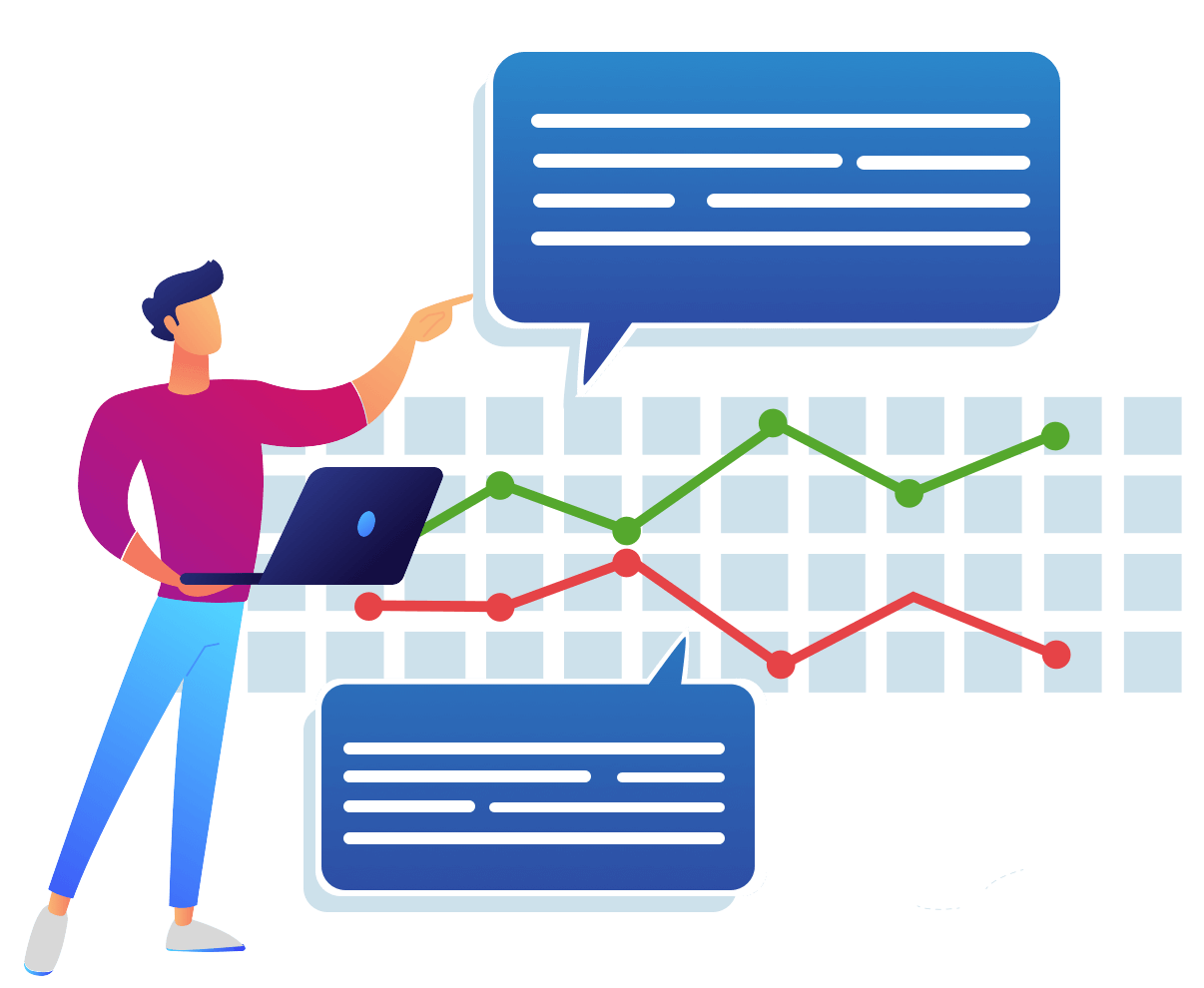
By leveraging social listening, you can gain insights into how your competitors are perceived and identify any emerging topics or sentiments that may impact their reputation. Notice a decline in sentiment one week? Look into the conversations that may have caused it. There may be an opportunity for your own brand to get ahead or, at the very least, prevent the same from happening to you.
LinkedIn Notifications
Leverage LinkedIn’s notification feature to stay updated on your competitors’ activities. Follow and set up notifications for specific companies or individuals to receive real-time updates on their posts, engagement, and Company Page updates. This will help you stay informed about their latest developments and strategies.
Following Hashtags
Following hashtags on LinkedIn tells the platform to show you relevant updates in your feed that include those hashtag topics. Take advantage of this feature by following hashtags related to your competition or industry. This allows you to keep track of conversations and content relevant to your competitors, ensuring that you don’t miss any important developments or discussions.
By utilizing these methods, you can stay ahead of the curve and gain valuable insights into public opinion surrounding your competitors. You’ll also be well-informed about any significant news or changes, allowing you to adjust your own LinkedIn strategy accordingly.
The Wrap Up
Performing a LinkedIn competitor analysis empowers you with valuable insights that can inform and transform your own strategies. From exploring your competitor’s Company Pages to analyzing their content strategy, an effective and thorough analysis can help you uncover trends, discover content ideas, identify growth opportunities, and more.
So, go ahead and dive deep into your competitor’s activities. By doing so, you’ll be equipped to make informed decisions, optimize your LinkedIn strategy, and outshine the competition.
